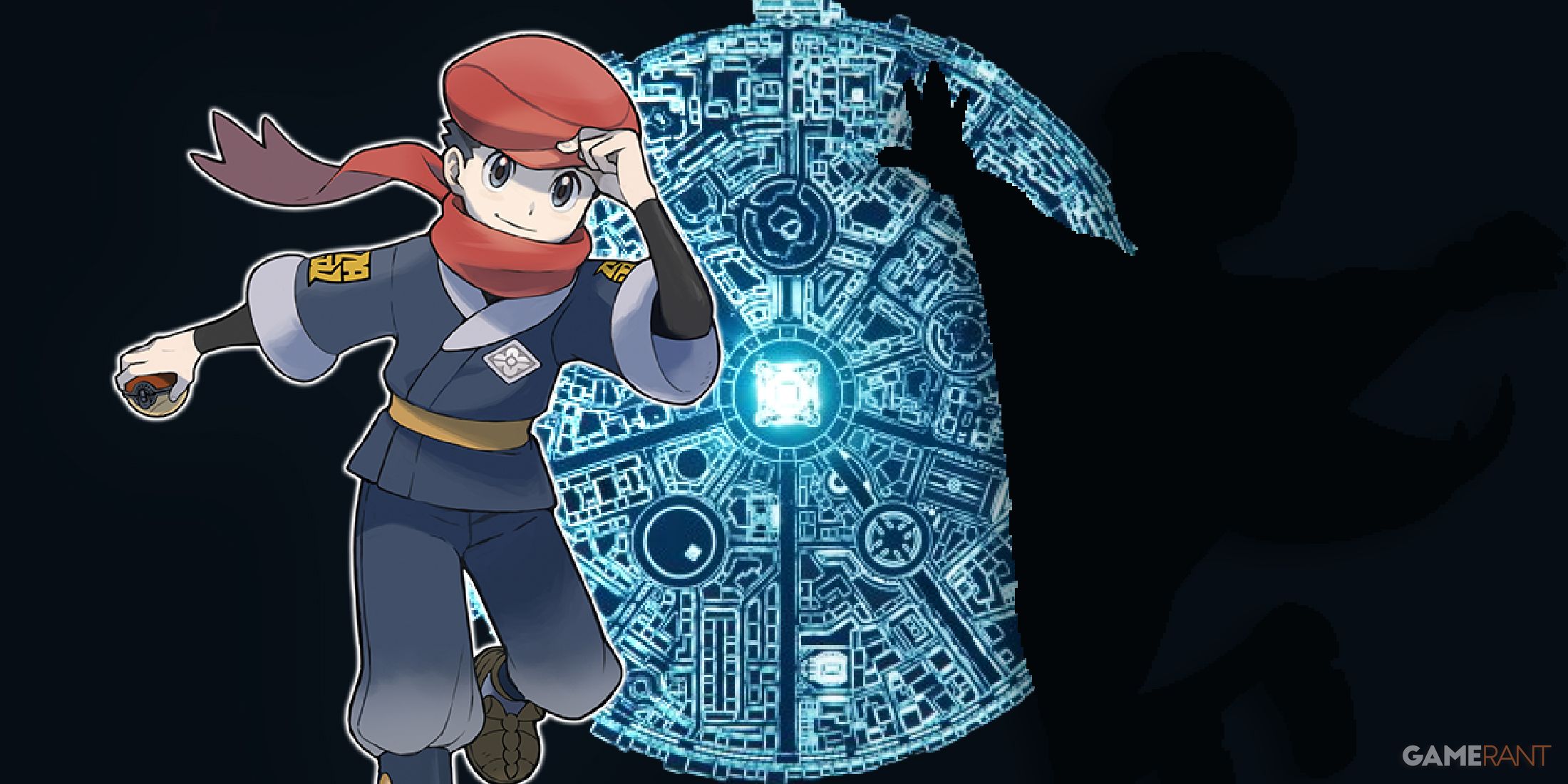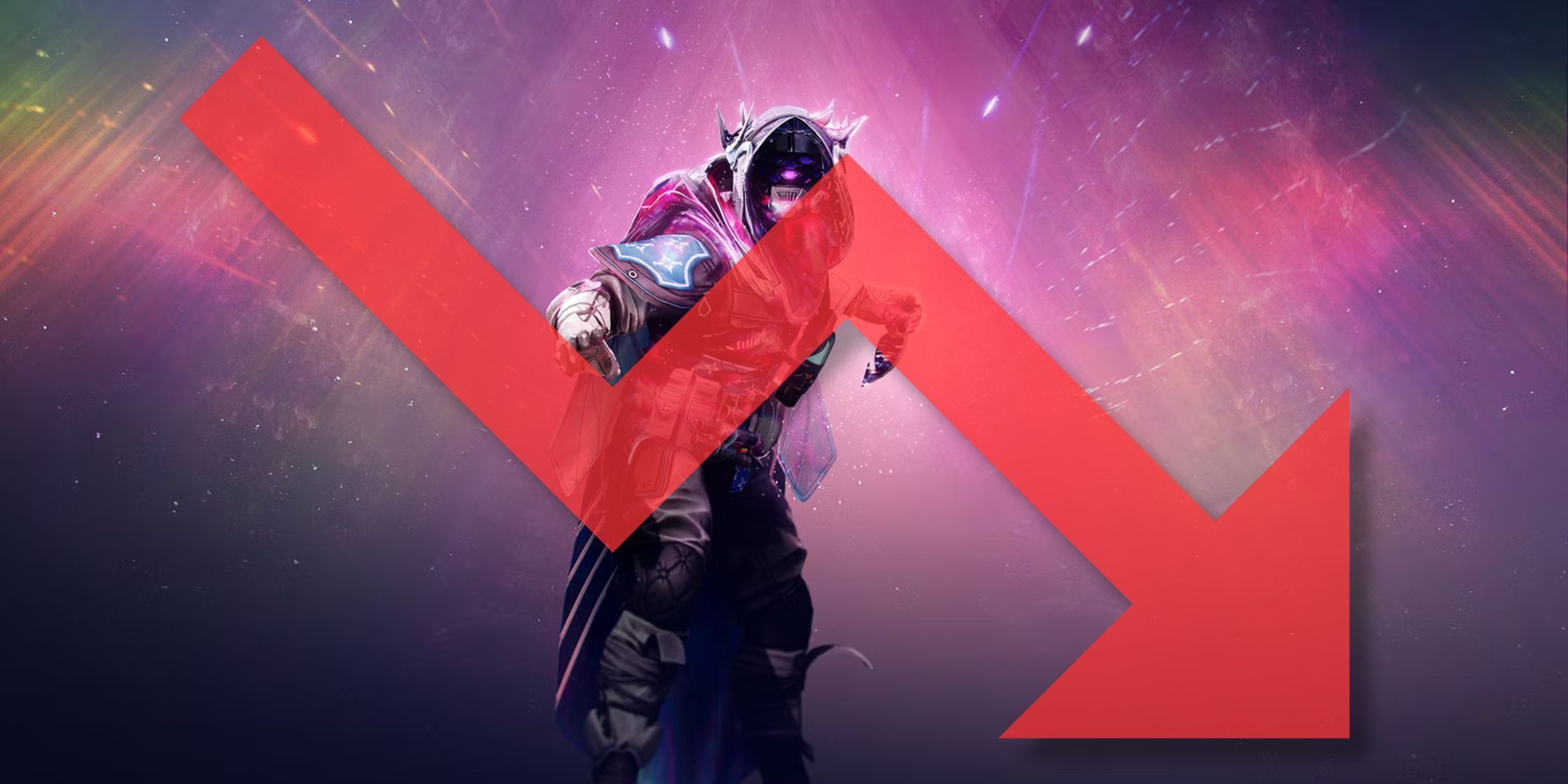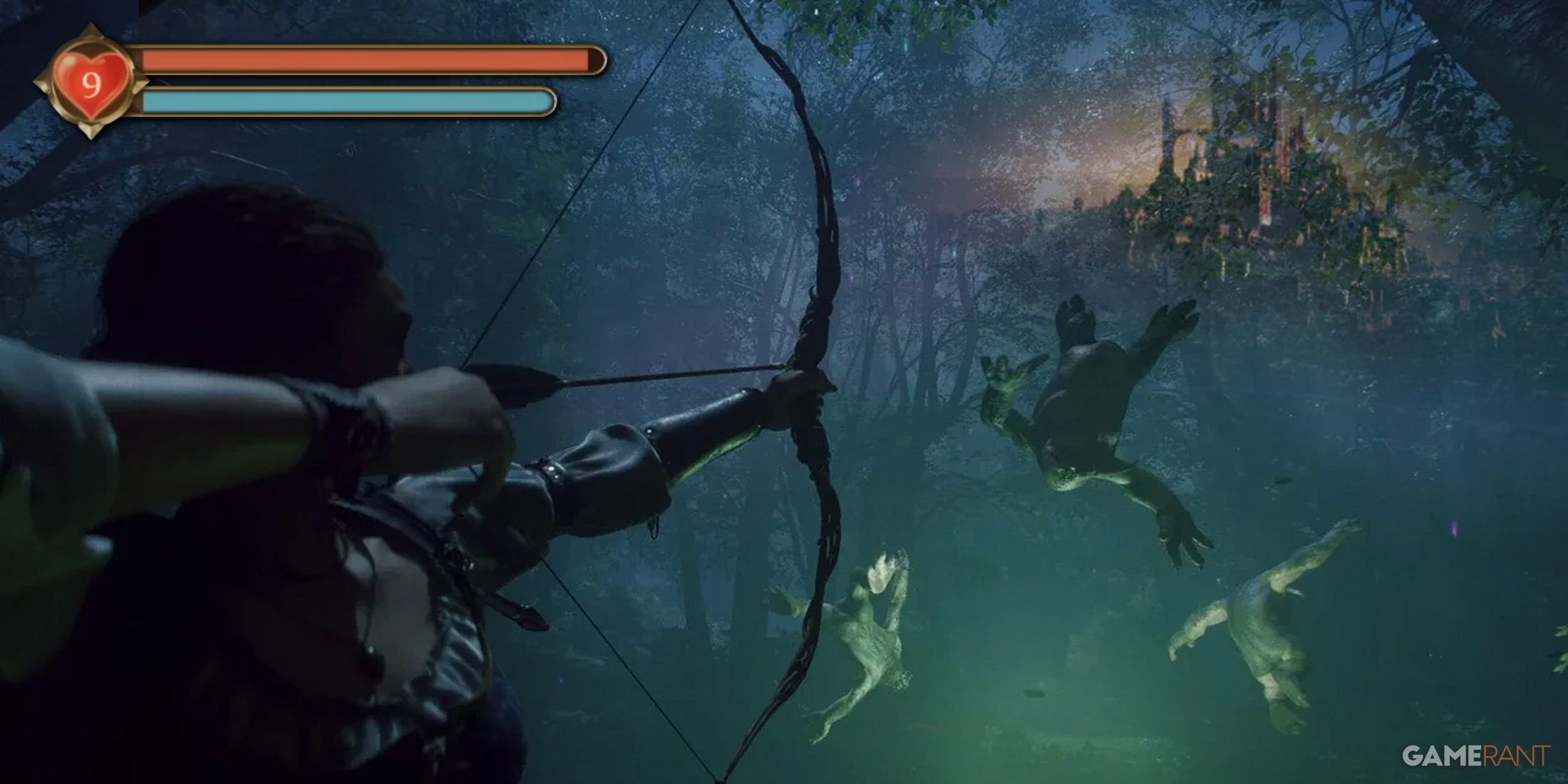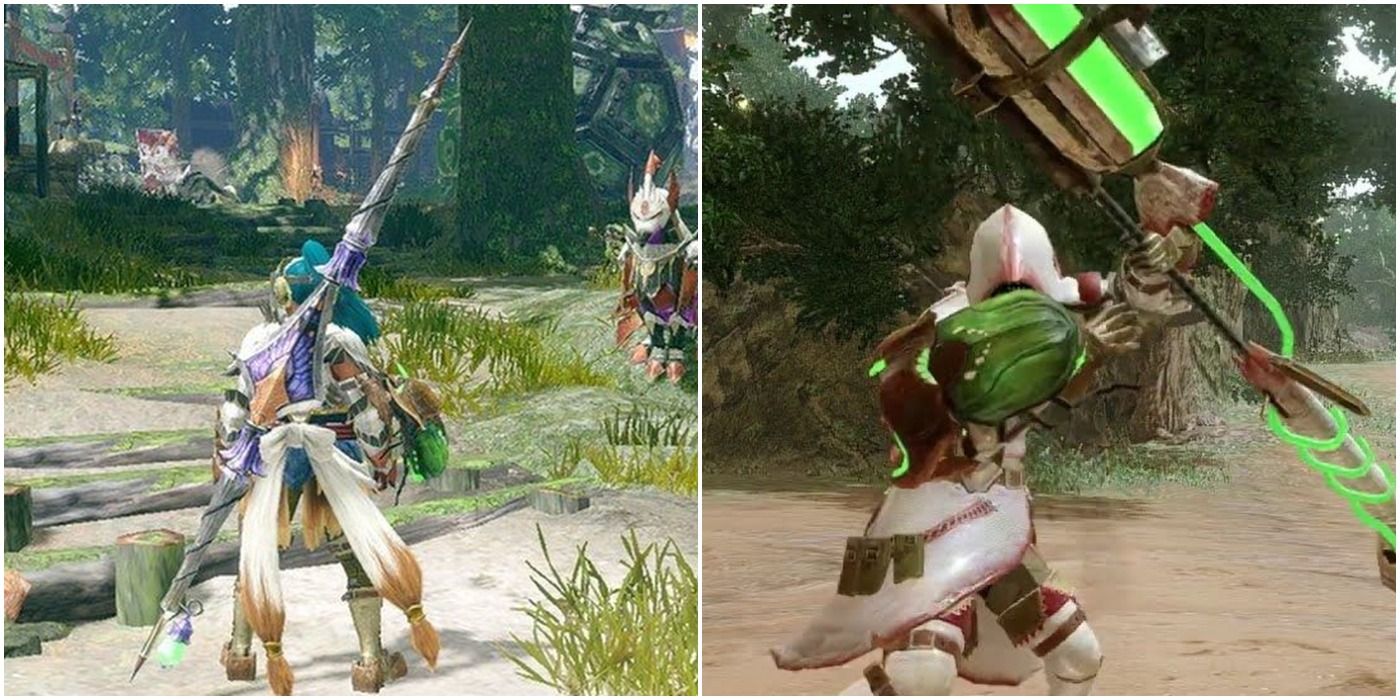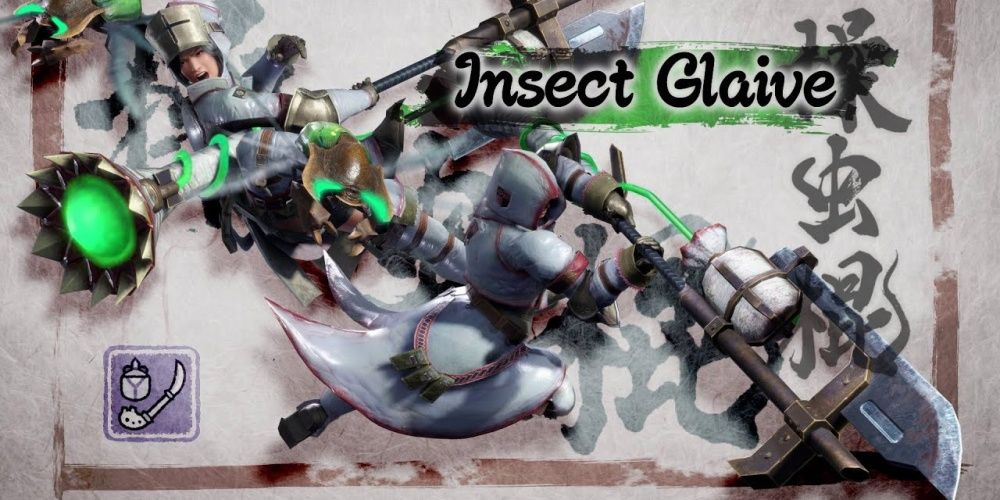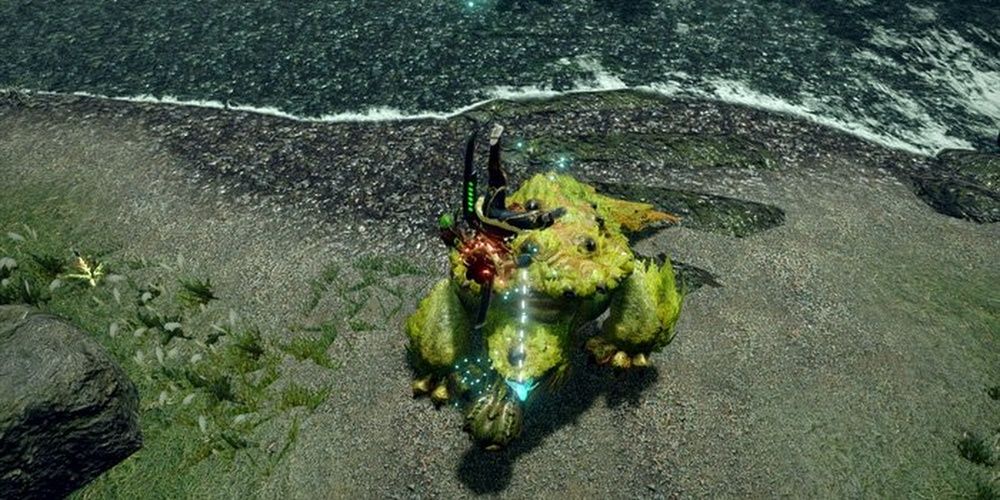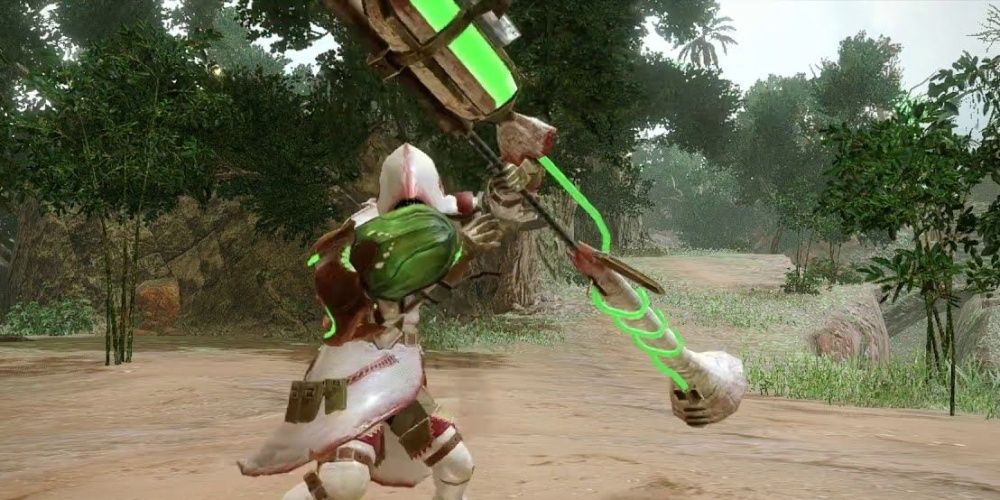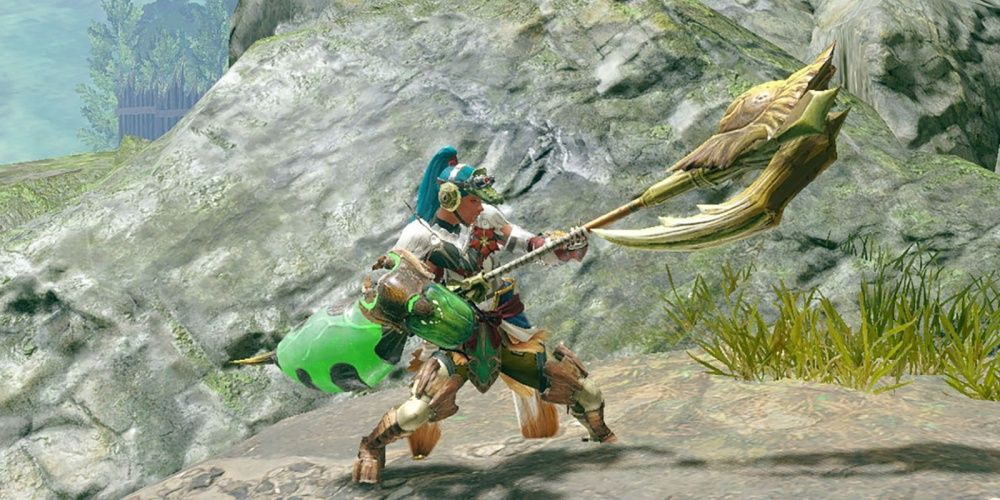Monster Hunter Rise launched with the same weapons as the previous installment. That said, these weapons (for the most part) differ greatly from their predecessors in Monster Hunter World. The insect glaive was arguably the best weapon in World for mobility and it mostly retains this status in Rise, although the addition of the wirebug has increased mobility across all weapon sets. The new insect glaive is very similar to what it was in World having received the fewest changes of the 14 different weapons.
The glaive might be very samey but kinsects work very differently in Rise and the addition of the wirebug can make for different glaive builds for different players. Monster Hunter: Rise throws a lot of information at the player, so while returning players may feel right at home with the new glaive, new players might feel a little overwhelmed. Luckily, the glaive isn't too hard once the player learns some simple tricks and tips to mastering it!
Basic Introduction & Extracts
The insect glaive can be thought of as two weapons in one: the glaive and the kinsect. The glaive will act as the primary damage dealer while the kinsect will be a sort of support device that enhances the power of the glaive. Players worried about controlling two things in the midst of combat should worry no more, as the kinsect is essentially just a tool. It requires little to no control aside from aiming and marking. Players can mark monsters by pressing ZR+X. The kinsect will then fly out and harvest Extract, which will be a key component to the glaive's success. Once Extract is harvested, recall the kinsect by pressing ZR+A to receive the associated buff.
There are three types of Extract: Red, White, and Orange. Red Extract is by far the most important of the three as it unlocks the true potential of the glaive via a whole new move set. The default moves of the glaive are rather slow and hard to combo. This changes with the Red Extract, as the glaive's moves chain together much easier and more attacks come out with each move. To see this in full effect, press ZR+B to vault into the air and follow this with an advancing slash by aiming with the left stick and attacking with A. Next, do this same attack but gather Red Extract first by hitting the monster (or training dummy) in the head with an aimed kinsect blast (ZR+X).
Plyers will notice that the vault plus advancing slash with Red Extract will do a flurry of attacks that can launch them back into the air for more air combos. This attack is much better than the default glaive aerial attack which is one slash that relaunches. This is why Red Extract is a must when facing any monster with the glaive. Next is White Extract which increases the speed of the player using the glaive and the jump height. This is useful for maintaining peak mobility but isn't a must for every fight. Lastly, there's Orange Extract which received quite a buff in Rise. The Orange Extract increases player defense and grants level 3 Earplugs, which often protect the player from monster roars that would otherwise knock them out of midair or stun them.
Keep in mind that the Extract gained by the kinsect is determined by where it hits the mosnter. Red Extract often comes from the part of the monster that deals damage (more often than not this is the head of the monster). Orange usually comes from hitting the legs with the kinsect harvest, and white comes from the wings or underside of the monster. This is the hardest part of playing the glaive. Once the kinsect play is mastered, the weapon becomes very simple to use and combo with. Players should definitely play around in the training area to figure out the best combos for their playstyles!
The Glaive's Aerial Play
Aside from the kinsect, the aerial capability of the glaive is what sets it apart from the other 13 weapons. Most weapons in the game are grounded for the most part, with very little aerial play. This changed a lot with Rise as many of the other weapons gained mobility buffs, but the glaive can still dominate in the air without using up precious wirebug charges. Players should take advantage of this mobility in combat by using their vault move (ZR+B) to get into the air. Once there, they can air dodge with a direction input and B, attack and relaunch into the air with a directional input and A, or attack back into the ground with X.
These are the three basic combat moves once in the air with a glaive. Aerial attacks build mount damage, which is shown by purple damage numbers in Rise. The more mount damage built up, the more likely a player will be able to mount and ride a monster. Keep in mind that the air dodge is more often used as an extender for other aerial attacks. If the monster is too far out for an attack with the glaive, air dodge forward and perform the desired attack once the monster has been reached. These attacks and maneuvers cost a lot of stamina though, so be sure to keep an eye on the yellow bar below the health bar.
Understanding Kinsects
Kinsects in Rise are quite different than they were in World. Returning players might be confused at their first kinsect as it has no associated element and doesn't leave powder behind when hitting the monster. There also isn't an option to nurture kinsects like in World. Instead of upgrading kinsects via a tree players will just be purchasing kinsects as they unlock them. The biggest change to kinsects is that they are now all in subgroups. There are 4 subgroups in Rise all with different benefits. First is the normal subgroup of kinsect. They have no special differences and are generally considered the weakest of the groups.
The second is the powder kinsect. These bugs will be familiar to anyone who played World as they play the closest to World's kinsects. These kinsects leave behind powder clouds when they attack a monster. For example, marking a monster with a kinsect shot (ZR+R) will have the kinsect repeatedly attack the marked part of the monster. Powder kinsects will leave behind clouds of powder with an associated element or damage type that can be burst by player attacks to build that type of damage on the monster. This makes the powder kinsect particularly good at afflicting enemies with poison, paralysis, or other elemental debuffs.
Next is the assist kinsect. This kinsect hinges on the player having collected all 3 extracts to be used. Once the player has gathered all the extracts via harvesting with the kinsect, the kinsect will actually attack the monster alongside the player in certain glaive combos (without the player even controlling the bug). This can be particularly powerful with the tornado slash attack and tetraseal slash. Lastly, there is the speed type. This kinsect charges on the player's arm until the glaive glows blue, at which point the kinsect can be sent forward like usual but instead of a weak hit or harvest, the kinsect will deal high damage. Keep in mind that the extra damage only comes from a fully charged kinsect which is marked by a blue glow of the glaive.
Kinsect Bonuses
Monster Hunter: Rise has given kinsects a huge buff with unique bonuses. Some kinsects won't have any bonus, but many will be split into 5 bonus types. The first is dual color. This bonus is arguably the best in the game as it allows players to gather two types of extract with one harvest move. This can make getting that ever so important Red Extract astronomically easier and this bonus combos well with the assist kinsect type which needs all 3 extracts to activate.
Next is the auto-attack frequency bonus which simply increases the number of times a player's kinsect will attack a marked spot on a monster. This can combo nicely with the powder-type kinsect. Next, there is the idle stamina recovery bonus which refills the kinsect's stamina gauge very quickly upon being recalled back to the player's arm. Kinsect stamina is usually not too much of a problem for a typical fight, but this bonus is definitely a good pickup for players who are tired of their kinsect running out of stamina.
The final two bonuses are mostly for speed-type kinsects. There is the charged chain attack bonus and the fast charge bonus. The chain attack gives the blue-charged speed kinsect a dive bomb style attack that deals high damage, and the fast charge bonus decreases the time needed for a blue-charged glaive. These two bonuses are mostly for speed-type kinsects.
The kinsects and their bonuses are essentially 50% of the glaive's play, so it is important for players to pay just as much attention to them as they do their primary weapon. Once these kinsect fundamentals are learned, the rest of the glaive training is a breeze. Aerial combos are simple to pull off and maximum damage ground combos can be reached with just a little time in the training area.

